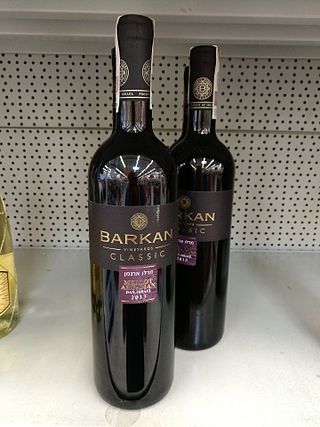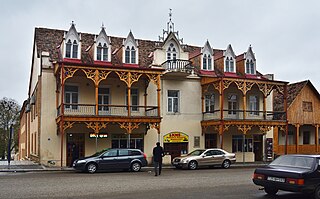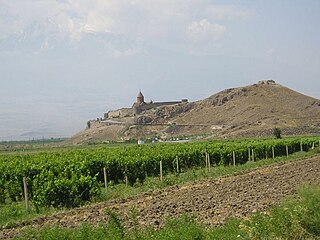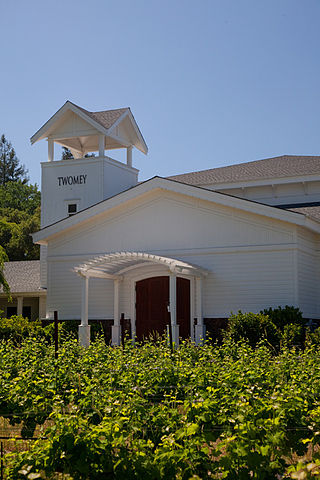History of Goygol Winery
With the settlement of German immigrants to Azerbaijan from Württemberg in the early 19th century, the wine production in central Azerbaijan was modernized. The Germans who settled in the village of Khanliglar near the town of Goygol in 1819 established a German colony called Helenendorf. Shortly thereafter, they were engaged in grape growing and winemaking activities.
After substantial investment from Christoff Vohrer and Christian Hummel, the Goygol Winery opened in 1860. In 1862, the same investors established two more companies in Helenendorf. The Vohrer Brothers company was managed by Christoff Vohrer and his sons Gottlob, Friedrich, Heinrich and Christopher. The Hummel Brothers Trading House was managed by Christian Hummel and his sons Jacob, Albert, Georg and Gotlieb. Both companies had chapters in Ganja, Baku, Tiflis, Saint Petersburg, Moscow, Kyiv, Odesa, Tomsk and Batumi.
After the establishment of Soviet rule in Azerbaijan, the company was abolished. In its place, the Soviet authorities created a Konkordia cooperative on August 8, 1922. The cooperative was the largest wine, cognac and vodka producer in the Caucasus.
During the existence of the Azerbaijan SSR, the company was renamed as Khanlar Agrosenaye. It was the largest spirits producer in the Republic and ranked third in the Soviet Union for cognac production. [2] During Soviet rule, the plant produced 7% of the overall Soviet production of wines and spirits. In 1985, due to Gorbachev alcohol prohibition campaign, the winery stopped production. [1]
After the restoration of independence of Azerbaijan, the winery was rebuilt and eventually bought by Vinagro LLC. [2]
Vinagro competes in international markets. The company consists of the grape reception division, a secondary wine processing department, a wine and cognac processing department, a vodka preparation and processing division, a cognac distillery and a cognac spirits preparation division. [1]

Sauvignon blanc is a green-skinned grape variety that originates from the city of Bordeaux in France. The grape most likely gets its name from the French words sauvage ("wild") and blanc ("white") due to its early origins as an indigenous grape in South West France. It is possibly a descendant of Savagnin. Sauvignon blanc is planted in many of the world's wine regions, producing a crisp, dry, and refreshing white varietal wine. The grape is also a component of the famous dessert wines from Sauternes and Barsac. Sauvignon blanc is widely cultivated in France, Chile, Romania, Canada, Australia, New Zealand, South Africa, Bulgaria, the states of Oregon, Washington, and California in the US. Some New World Sauvignon blancs, particularly from California, may also be called "Fumé Blanc", a marketing term coined by Robert Mondavi in reference to Pouilly-Fumé.

Moldova has a well-established wine industry. With a production of around 2 million hectolitres of wine, it is the 11th largest European wine-producing country. Moldova has a vineyard area of 148,500 hectares of which 107,800 hectares are used for commercial production. The remaining 40,700 hectares are vineyards planted in villages around the houses used to make home-made wine. Many families have their own recipes and strands of grapes that have been passed down through the generations. There are 3 historical wine regions: Valul lui Traian, Stefan Voda and Codru (center), destined for the production of wines with protected geographic indication.
South African wine has a history dating back to 1659 with the first bottle being produced in Cape Town by its founder and governor Jan van Riebeeck. Access to international markets led to new investment in the South African wine market. Production is concentrated around Cape Town and almost exclusively located within the Western Cape province, with major vineyard and production centres at Constantia, Paarl, Stellenbosch and Worcester.
Carmel Winery is a vineyard and winery in Israel. Founded in 1882 by Edmond James de Rothschild, its products are exported to over 40 countries. It is the largest winery in Israel, with a local market share of almost 50%.

Barkan Wine Cellars is the largest Israeli winery, producing 12-14 million bottles a year. The main building of the winery is located at Kibbutz Hulda, east of Tel Aviv. Barkan receives grapes from vineyards in the Golan Heights, Upper Galilee, Lower Galilee, Mount Tabor region, the Jerusalem Mountains and Mitzpe Ramon.

Kazakh wine is wine made in Kazakhstan. The roots of the Kazakh wine industry can be traced to the 7th century AD when grapevines were brought to the region from neighboring Uzbekistan and China. While only around 4% of the land in Kazakhstan is ideally situated for viticulture, the country does manage to produce over 6.2 million gallons of wine annually from 32,120 acres (13,000 ha). Buoyed by its mineral wealth, the country is an enthusiastic consumer of wine but must import 80% of the 30 m bottles it drinks.

J. Lohr Vineyards & Wines is a winemaking company headquartered in San Jose, California, with over 4,000 acres of estate vineyards in the Paso Robles AVA in San Luis Obispo County, Arroyo Seco and Santa Lucia Highlands AVAs in Monterey County, and the St. Helena AVA in Napa Valley, California. The family-owned and operated company was founded by Jerry Lohr in 1974. The company operates wineries in San Jose, Paso Robles, and Greenfield, California. In 2013, Steve Lohr was appointed CEO of the company. J. Lohr Vineyards & Wines’ product portfolio includes eight tiers of wine: J. Lohr Signature, J. Lohr Cuvée Series, J. Lohr Vineyard Series, J. Lohr Gesture, J. Lohr Pure Paso Proprietary Red Wine, J. Lohr Monterey Roots, J. Lohr Estates and ARIEL Vineyards. The portfolio also includes specialty brands Cypress Vineyards and Painter Bridge. J. Lohr ranks among the top 25 wine producers in the United States, with annual US sales exceeding 1.8 million cases.

California wine production has a rich viticulture history since 1680 when Spanish Jesuit missionaries planted Vitis vinifera vines native to the Mediterranean region in their established missions to produce wine for religious services. In the 1770s, Spanish missionaries continued the practice under the direction of the Father Junípero Serra who planted California's first vineyard at Mission San Juan Capistrano.
Domaine de Chevalier is a Bordeaux wine from the Pessac-Léognan appellation, ranked among the Crus Classés for red and white wine in the Classification of Graves wine of 1953 and 1959. The winery and vineyards are located south of the city of Bordeaux, in the commune of Léognan. It is one of a very few Bordeaux estates to be named domaine instead of château.

Goygol is a city, municipality and the capital of the Goygol District in northwestern Azerbaijan. It is around 10 km (6 mi) south of Azerbaijan's second-largest city, Ganja. The city of Goygol has a population of 37,200. The municipality includes the city of Goygol and the village of Qızılqaya.

Before the 2020 Nagorno-Karabakh war, the economy of the Republic of Artsakh was small, but rapidly growing. The economy of Karabakh showed a relatively quick and confident recovery from the 1991-1994 war. In 1999, the GDP figure was $59 million, 80 percent down on the figure in Soviet times. Yet, the GDP of the Republic of Artsakh reached $114 million in 2005, double the figure in 2001, registering economic growth of 14% in 2005, and in 2009 it registered a GDP of $260 million, which increased to $320 million by 2010. Nagorno-Karabakh's GDP (PPP) for 2010 was estimated at $1.6 billion.
Avshar Wine Factory, is one of the leading producers of alcoholic drinks in Armenia, located in the village of Avshar of Ararat Province. It was founded in 1968 to process the grapes of the fertile villages of Ararat plain, one of Armenia's leading agricultural areas. Armenian traditions and folklore suggest that wine production in the region dates back to Noah planting grapes upon his descent from Mount Ararat in the Book of Genesis.

Armenian wine is wine made in Armenia and the Armenian-populated Republic of Artsakh, in the region of South Caucasus. Armenia is one of the oldest wine producing regions of the world. In particular, the oldest known winery, Areni-1 winery, was found in Armenia's Areni region, which is still known for its wine production and endemic grapes.

Azerbaijani wine is produced in several regions throughout Azerbaijan. Before 20th century communist rule, the region which makes up modern-day Azerbaijan had produced wine since the second millennium BC. The territory of modern-day Azerbaijan has a long history of wine production, that was rediscovered at archaeological digs of settlements in Kültəpə, Qarabağlar

Cecil O. De Loach Jr. is a California grape-grower and winemaker in the Russian River Valley AVA who has contributed to the reputation and notoriety of Sonoma County viticulture.
Kingston Family Vineyards is a Chilean winery located in the Casablanca Valley of Chile. Considered pioneers for growing red wine grapes in a valley known for whites, they have been called "one of the area’s most promising producers". The vineyard was founded in the early 1990s by the Kingston Family.

Twomey Cellars is a California winery. It was established in 1999 by the Duncan Family, who have operated the successful Silver Oak Cellars in California since 1972. The Duncan Family started Twomey Cellars to pursue varietals other than Cabernet Sauvignon. Twomey has three wineries: one in Calistoga in the Napa Valley; one in Healdsburg in the Russian River Valley; one in Philo in Anderson Valley, and produces mainly Pinot noir and Sauvignon blanc. Twomey’s Sauvignon blanc is a blend of Sauvignon blanc grapes from their estate vineyards at their wineries in Napa Valley, Anderson Valley, and Russian River Valley.

Sula Vineyards is a winery and vineyard located in the Nashik region of western India, 180 km northeast of Mumbai. It was founded by Rajeev Samant in 1999. Sula has grown to be India’s largest and most awarded wine brand. Sula introduced grape varietals such as Chenin blanc, Sauvignon blanc, Riesling and Zinfandel in India and is the leading player in the Indian wine industry.
Four Seasons Wines Limited is an Indian winery which was established in 2006, based in Bangalore, India. It produces wines from grapes grown around Sahyadri valley in Maharashtra. It is a subsidiary of United Spirits Limited (USL), which is itself part of the United Breweries Group. Four Seasons Wines manufactures and markets wines in India. It provides red, white, and rosé wines. Four Seasons Wines markets its wines under two brand names: Zinzi and Four Seasons.

Germans have lived in Azerbaijan since the 1810s, with a large concentration of them once found in the western part of the country. The community grew out of two original settlements founded by German settlers from Württemberg who settled here in 1819. During World War II, it virtually ceased to exist as the Soviet government, which ruled Azerbaijan at the time, grew wary of the ethnic Germans potentially sympathising with the advancing army of the Third Reich and deported them to Central Asia in 1942.













